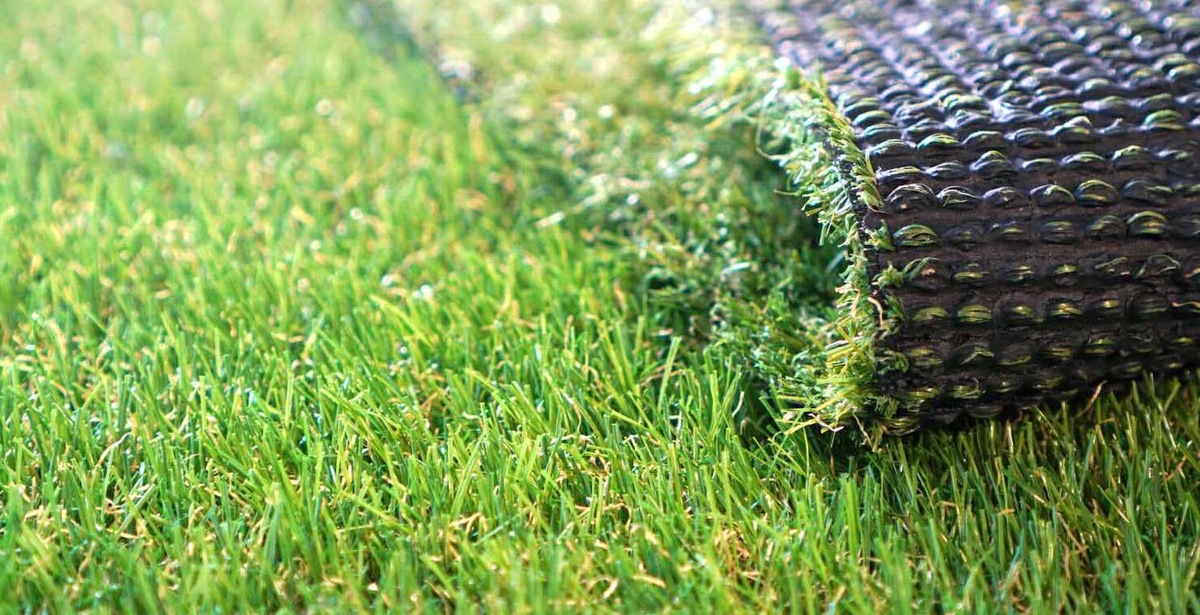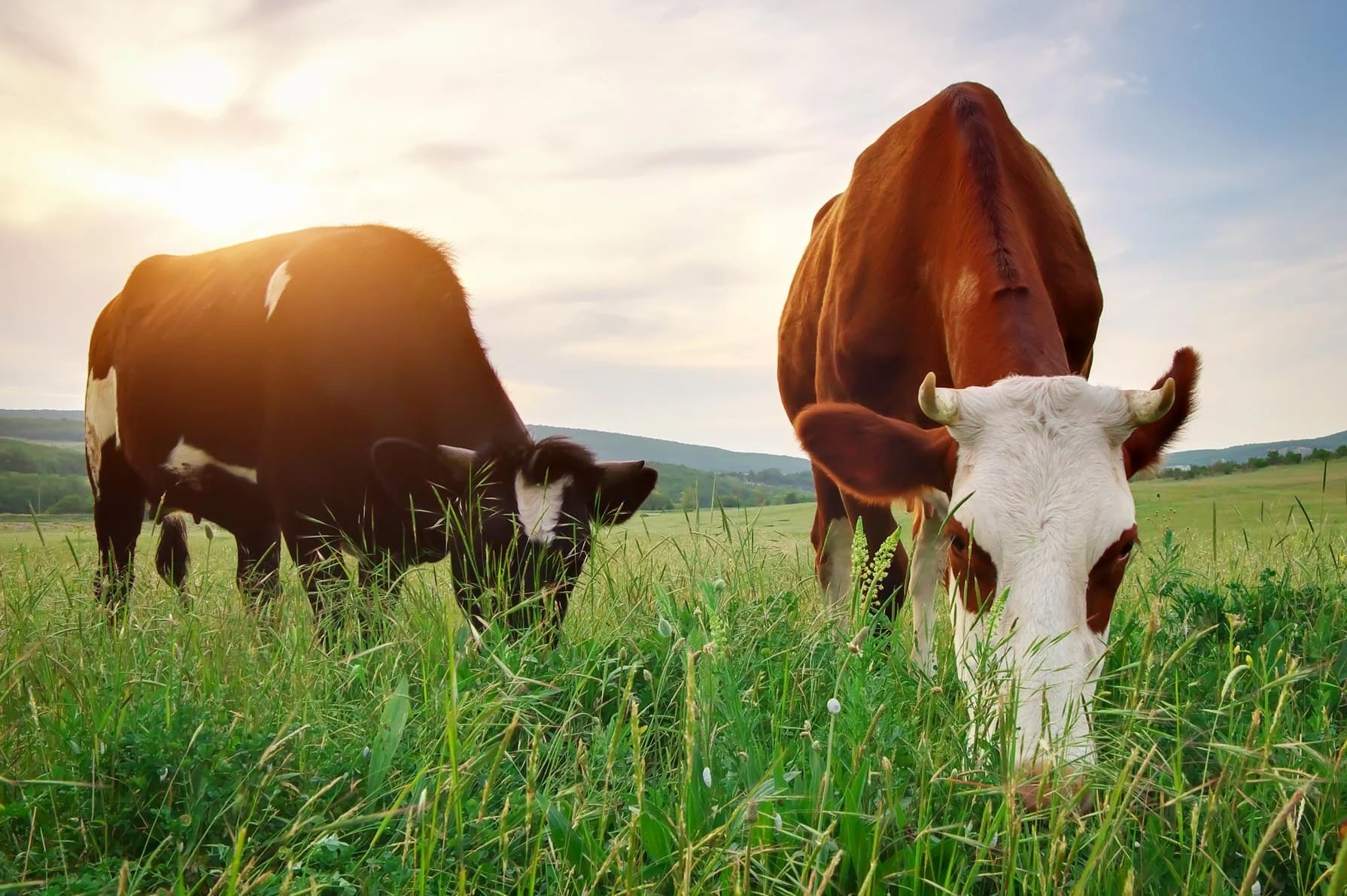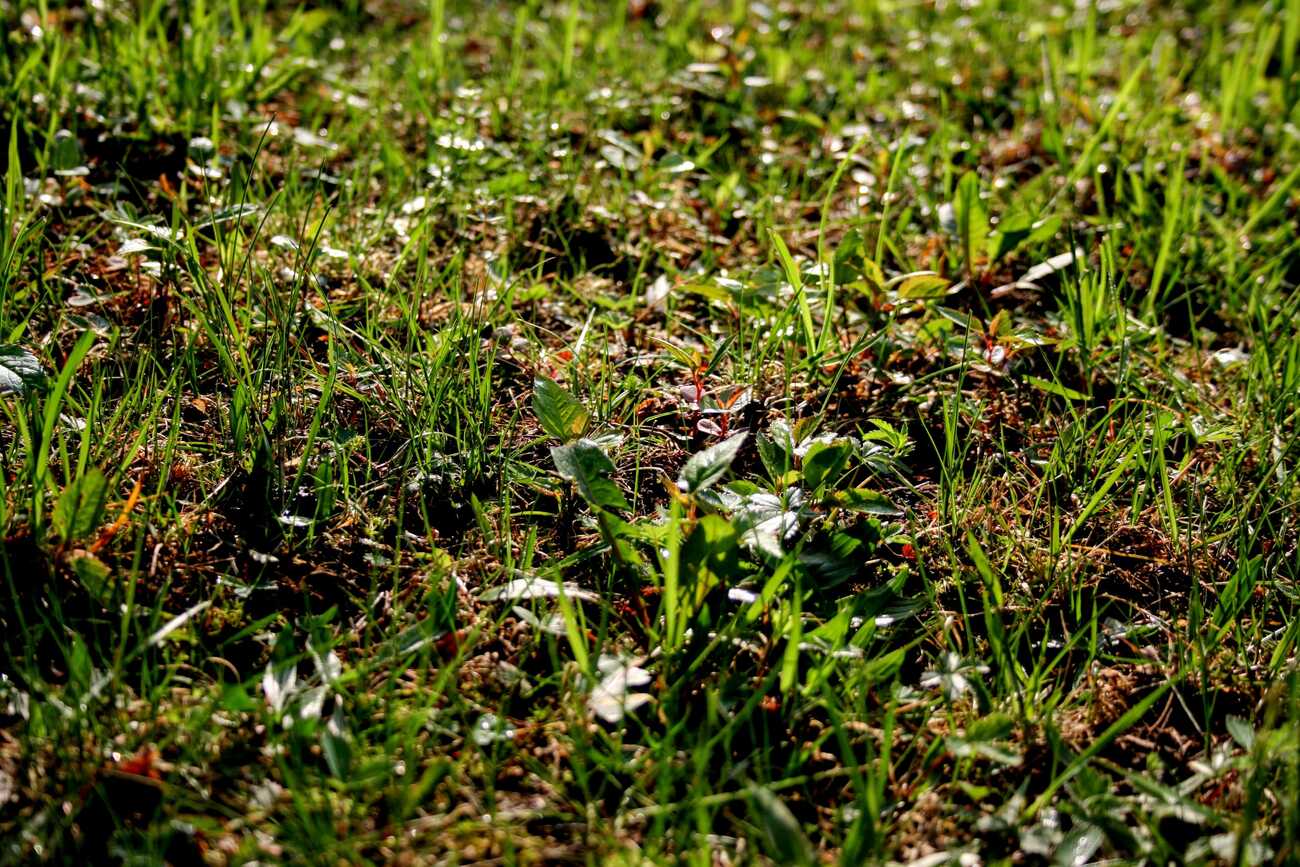Home>Gardening & Outdoor>Landscaping Ideas>Why Is Grass Better Than Turf


Landscaping Ideas
Why Is Grass Better Than Turf
Modified: February 18, 2024
Discover the benefits of natural grass over artificial turf for landscaping ideas. Learn why grass is the superior choice for your outdoor space.
(Many of the links in this article redirect to a specific reviewed product. Your purchase of these products through affiliate links helps to generate commission for Storables.com, at no extra cost. Learn more)
Introduction
When it comes to landscaping, the choice between natural grass and artificial turf is a decision that can significantly impact the aesthetics, environmental footprint, and overall experience of a space. Both options have their merits, but understanding the nuances of each can help in making an informed decision. In this article, we will delve into the various aspects of natural grass and artificial turf, exploring their environmental impact, health and safety considerations, cost implications, aesthetics, and maintenance requirements. By examining these factors, we aim to shed light on why natural grass is often the preferred choice for landscaping projects. Let's embark on this journey to uncover the unique attributes that make natural grass a standout option for outdoor spaces.
Key Takeaways:
- Natural grass is better than artificial turf for landscaping due to its environmental benefits, safety advantages, and cost-effectiveness. It also creates visually captivating and sensory-rich outdoor spaces, supporting biodiversity and well-being.
- Choosing natural grass over artificial turf for landscaping helps the environment, promotes safety and well-being, and offers long-term cost savings. It also creates beautiful, dynamic, and eco-friendly outdoor environments that connect with nature.
Environmental Impact
Natural grass is a champion in the realm of environmental impact. Its ability to absorb carbon dioxide and release oxygen through the process of photosynthesis makes it a vital player in the fight against climate change. This natural process helps to mitigate the effects of greenhouse gases, contributing to cleaner and fresher air. In contrast, artificial turf, typically made from non-biodegradable materials such as plastic and rubber, does not possess the same carbon-sequestering capabilities. The production of synthetic turf also involves the use of energy-intensive manufacturing processes, which can further contribute to environmental degradation.
Moreover, natural grass plays a crucial role in water conservation and soil health. Its root systems help to prevent soil erosion, promoting stability and preventing sediment runoff into water bodies. Additionally, natural grass aids in water filtration, allowing rainwater to percolate into the soil and replenish groundwater reservoirs. This natural filtration process helps to maintain the quality of local water sources, benefiting both the environment and surrounding communities. On the other hand, artificial turf requires regular cleaning and maintenance, often involving the use of chemical agents that can leach into the soil and water systems, posing potential risks to the ecosystem.
Furthermore, natural grass provides habitat and sustenance for various forms of wildlife, including insects, birds, and small mammals. These organisms play essential roles in the ecosystem, contributing to biodiversity and ecological balance. In contrast, artificial turf does not offer the same level of support for wildlife, as it lacks the natural elements and biodiversity found in grassy areas.
In summary, the environmental impact of natural grass extends far beyond its visual appeal. Its ability to sequester carbon, conserve water, support soil health, and foster biodiversity makes it a sustainable and eco-friendly choice for landscaping projects. By opting for natural grass over artificial turf, individuals and communities can actively contribute to environmental preservation and conservation, creating outdoor spaces that are not only visually stunning but also environmentally responsible.
Health and Safety
When it comes to health and safety considerations, natural grass holds a distinct advantage over artificial turf. One of the primary factors contributing to this advantage is the natural composition of grass, which provides a safer and more comfortable surface for various activities. Unlike artificial turf, which can become significantly hotter than natural grass, especially in direct sunlight, natural grass offers a cooler and more forgiving surface, reducing the risk of heat-related injuries during outdoor play and recreation.
In addition, natural grass possesses natural cushioning properties, which can help mitigate the impact of falls and tumbles, making it a safer option, particularly for children and athletes. The softer and more yielding nature of natural grass can contribute to a reduced risk of impact-related injuries, providing a more forgiving surface for physical activities.
Furthermore, natural grass has been shown to have a positive impact on mental well-being. The presence of natural green spaces has been linked to stress reduction, improved mood, and enhanced overall well-being. This is particularly relevant in outdoor recreational areas, where the inclusion of natural grass can contribute to a more relaxing and enjoyable environment for individuals and communities.
In contrast, artificial turf, with its synthetic composition and often firm and unforgiving surface, may pose an increased risk of abrasions, friction-related injuries, and discomfort during prolonged use. The heat retention properties of artificial turf can also lead to elevated surface temperatures, potentially causing discomfort and increasing the risk of heat-related ailments.
Moreover, the maintenance and cleaning practices associated with artificial turf can introduce additional health and safety considerations. The use of chemical agents and disinfectants for cleaning artificial turf may pose risks to individuals coming into contact with the surface, especially in areas frequented by children and pets. In contrast, natural grass, when managed using sustainable and eco-friendly practices, presents minimal health and safety risks associated with regular use and maintenance.
In summary, the health and safety benefits of natural grass, including its cooler surface temperatures, natural cushioning properties, positive impact on mental well-being, and minimal health risks associated with maintenance, position it as a preferred choice for outdoor spaces where the well-being of individuals and communities is a priority. By opting for natural grass, individuals can create outdoor environments that not only promote physical safety but also contribute to overall health and well-being.
Cost
When evaluating the cost considerations associated with natural grass and artificial turf, it's essential to take into account both the initial investment and the long-term expenses. While artificial turf may seem like a low-maintenance and cost-effective option at first glance, a closer examination reveals a more nuanced financial landscape.
Artificial turf typically entails a substantial upfront cost, encompassing the purchase of materials, installation expenses, and any additional groundwork required to prepare the area. This initial investment can be significant, especially for larger landscaping projects or sports fields. However, proponents of artificial turf often highlight the perceived long-term savings associated with minimal maintenance and water usage.
On the other hand, natural grass may require a lower initial investment, particularly when considering smaller-scale applications. The cost of grass seed, sod, or turf rolls, along with installation and irrigation systems, can be more budget-friendly compared to the upfront expenses of artificial turf. However, it's crucial to factor in ongoing maintenance costs, including mowing, fertilization, irrigation, and pest control, which contribute to the overall expenditure associated with natural grass.
Moreover, when assessing the long-term financial implications, natural grass presents a compelling case. While the maintenance costs of natural grass are ongoing, advancements in sustainable landscaping practices, such as water-efficient irrigation systems and eco-friendly maintenance techniques, can help mitigate these expenses. Additionally, the environmental benefits of natural grass, including its carbon-sequestering capabilities and water conservation properties, contribute to long-term cost savings by reducing the need for extensive irrigation and climate control measures often associated with artificial turf.
Furthermore, the lifespan of artificial turf must be considered when evaluating its cost-effectiveness. While artificial turf is designed to withstand heavy use and inclement weather, it is not immune to wear and degradation. Over time, artificial turf may require repairs or replacement, incurring additional expenses that should be factored into the overall cost analysis.
In summary, the cost considerations associated with natural grass and artificial turf extend beyond the initial investment, encompassing long-term maintenance, environmental impact, and lifespan. While artificial turf may present apparent cost savings in terms of maintenance and water usage, a comprehensive evaluation reveals that natural grass, when managed with sustainable practices, can offer a financially viable and environmentally responsible landscaping solution. By weighing the upfront expenses against the long-term benefits and considering the environmental and aesthetic value of natural grass, individuals and communities can make informed decisions that align with their budgetary and sustainability goals.
Grass is better than turf because it helps reduce heat, absorbs water, and provides a natural habitat for insects and wildlife. It also improves air quality and reduces the risk of injuries during sports activities.
Aesthetics
Aesthetics play a pivotal role in shaping the visual appeal and ambiance of outdoor spaces, making it a crucial factor to consider when choosing between natural grass and artificial turf. Natural grass possesses a timeless and organic beauty that effortlessly blends with the surrounding environment. Its lush green hues, varying textures, and natural irregularities create a visually captivating landscape that exudes a sense of tranquility and harmony. The gentle sway of grass blades in the breeze, the dappled patterns of sunlight filtering through the foliage, and the seasonal changes that bring forth vibrant blooms and subtle shifts in color contribute to the dynamic and ever-evolving aesthetic of natural grass.
In contrast, artificial turf, while offering a consistent and uniform appearance, may lack the organic charm and sensory richness inherent to natural grass. The synthetic nature of artificial turf can result in a visually static and predictable landscape, potentially detracting from the immersive and authentic experience of outdoor environments. The absence of natural variations and the tactile qualities found in grass can contribute to a less dynamic and engaging aesthetic, particularly in settings where a connection to nature and a sense of authenticity are desired.
Furthermore, the aesthetic appeal of natural grass extends beyond its visual allure. It serves as a canvas for diverse flora and fauna, providing a habitat for insects, birds, and small mammals. The presence of natural grass can contribute to a vibrant and biodiverse ecosystem, enriching the visual landscape with the vitality of life and the interplay of various species. This ecological richness adds depth and character to outdoor spaces, fostering a sense of interconnectedness and natural balance that enhances the overall aesthetic experience.
In addition to its visual and ecological contributions, natural grass offers a sensory dimension that enriches the aesthetic appeal of outdoor environments. The softness and resilience of grass underfoot, the earthy fragrance released after a light rain, and the soothing sound of rustling grass blades create a multisensory experience that elevates the aesthetic allure of natural grass.
In summary, the aesthetics of natural grass encompass not only its visual beauty but also its capacity to create dynamic, biodiverse, and sensory-rich landscapes. The organic charm, ecological vitality, and multisensory appeal of natural grass contribute to a compelling and immersive aesthetic that resonates with individuals seeking authentic, visually captivating, and sensorially engaging outdoor spaces. By embracing the aesthetic richness of natural grass, individuals and communities can create landscapes that inspire, rejuvenate, and connect with the natural world in meaningful and enduring ways.
Read more: Why Is Clover Better Than Grass
Maintenance
Maintaining outdoor spaces is a crucial aspect of landscaping, and the choice between natural grass and artificial turf significantly impacts the maintenance requirements and practices. Natural grass, while inherently dynamic and resilient, requires regular care and attention to ensure its health and vitality. One of the primary maintenance tasks associated with natural grass is mowing, which helps to control the height of the grass, promote even growth, and maintain a manicured appearance. Additionally, fertilization is essential to provide the necessary nutrients for healthy grass growth, contributing to lush and vibrant greenery. Irrigation systems play a pivotal role in sustaining natural grass, ensuring adequate moisture levels to support optimal growth and resilience, especially during dry periods. Furthermore, aerating the soil, dethatching, and overseeding are integral practices that help to enhance soil structure, reduce compaction, and promote robust grass coverage.
In contrast, artificial turf presents a different set of maintenance requirements. While it may not necessitate mowing, fertilization, or irrigation, artificial turf demands regular cleaning and upkeep to preserve its appearance and functionality. Removing debris, such as leaves and twigs, from the surface of artificial turf is essential to prevent accumulation and maintain a tidy and inviting landscape. Additionally, periodic brushing or raking of the turf fibers helps to prevent matting and ensure a consistent and appealing aesthetic. Furthermore, cleaning and disinfecting artificial turf, particularly in high-traffic areas, are vital to mitigate the risk of microbial growth and maintain a hygienic surface.
It is important to note that both natural grass and artificial turf require proactive pest and weed management to safeguard the integrity of the landscape. For natural grass, this may involve the use of eco-friendly pest control measures and targeted weed management techniques to minimize the impact on the surrounding ecosystem. Similarly, artificial turf may require pest control interventions to prevent infestations and preserve the quality of the synthetic surface.
In summary, the maintenance of natural grass and artificial turf encompasses a range of tasks and practices tailored to the unique characteristics of each landscaping option. While natural grass demands ongoing care to support its natural growth and ecological contributions, artificial turf requires regular cleaning and maintenance to uphold its visual appeal and functionality. By understanding the distinct maintenance requirements of each option, individuals and communities can make informed decisions that align with their landscaping goals and sustainability considerations.
Conclusion
In conclusion, the choice between natural grass and artificial turf for landscaping projects encompasses a multifaceted evaluation of environmental impact, health and safety considerations, cost implications, aesthetics, and maintenance requirements. While both options offer unique attributes, natural grass emerges as a standout choice for outdoor spaces, embodying a harmonious blend of ecological sustainability, visual allure, and sensory richness.
The environmental impact of natural grass extends far beyond its aesthetic appeal, encompassing carbon sequestration, water conservation, soil health, and biodiversity support. Its ability to mitigate climate change, foster water filtration, and provide habitat for diverse wildlife underscores its role as a sustainable and eco-friendly landscaping solution. In contrast, artificial turf, with its synthetic composition and energy-intensive manufacturing processes, presents environmental challenges that detract from its long-term sustainability.
Health and safety considerations further underscore the advantages of natural grass, with its cooler surface temperatures, natural cushioning properties, and positive impact on mental well-being. The inherent safety and comfort offered by natural grass, particularly in recreational and communal spaces, contribute to a nurturing and inviting outdoor environment. In contrast, the potential heat retention and maintenance-related health risks associated with artificial turf pose concerns for the well-being of individuals and communities.
Cost considerations, while multifaceted, reveal the long-term financial viability and environmental responsibility of natural grass. By factoring in ongoing maintenance, environmental impact, and lifespan, natural grass emerges as a financially feasible and sustainable choice, especially when supported by eco-friendly landscaping practices and water-efficient irrigation systems.
Aesthetically, natural grass captivates with its organic beauty, ecological vitality, and multisensory appeal, creating dynamic and immersive landscapes that resonate with individuals seeking authentic and visually captivating outdoor spaces. Its capacity to foster biodiversity, provide sensory richness, and evoke a sense of interconnectedness with nature contributes to a compelling and enduring aesthetic experience.
Finally, the maintenance requirements of natural grass, while demanding, align with sustainable landscaping practices and ecological stewardship, supporting the long-term health and vitality of outdoor environments. By embracing the unique maintenance needs of natural grass, individuals and communities can cultivate landscapes that thrive in harmony with the surrounding ecosystem.
In essence, the comprehensive evaluation of natural grass and artificial turf reveals the intrinsic value of natural grass as a preferred choice for landscaping projects. Its environmental stewardship, health and safety benefits, long-term cost-effectiveness, aesthetic richness, and sustainable maintenance practices position it as a compelling and responsible option for creating outdoor spaces that inspire, rejuvenate, and connect with the natural world in meaningful and enduring ways.
Frequently Asked Questions about Why Is Grass Better Than Turf
Was this page helpful?
At Storables.com, we guarantee accurate and reliable information. Our content, validated by Expert Board Contributors, is crafted following stringent Editorial Policies. We're committed to providing you with well-researched, expert-backed insights for all your informational needs.















0 thoughts on “Why Is Grass Better Than Turf”